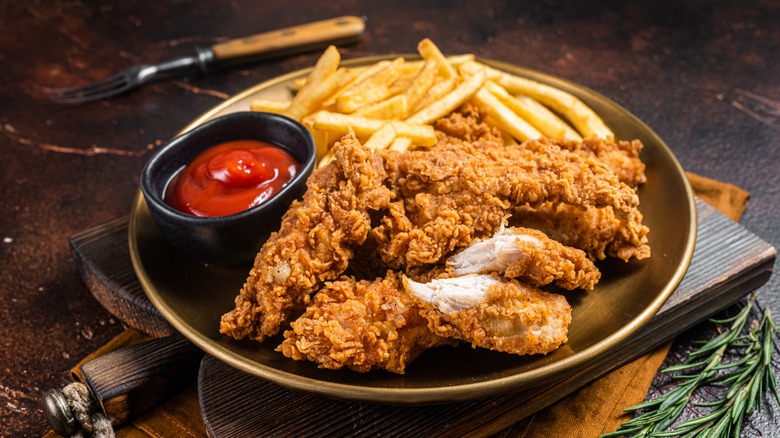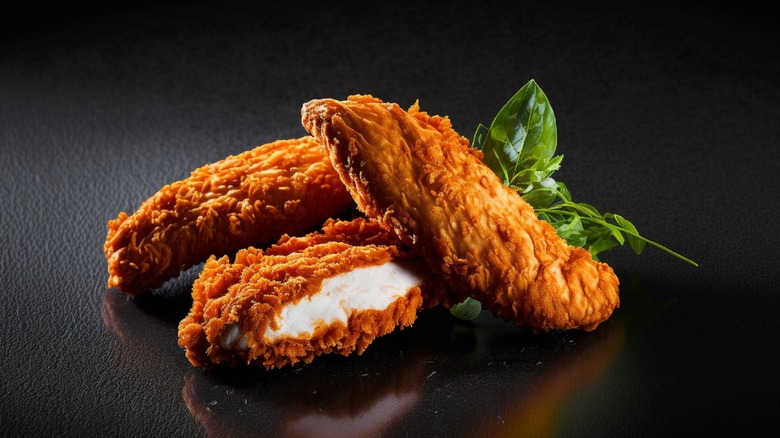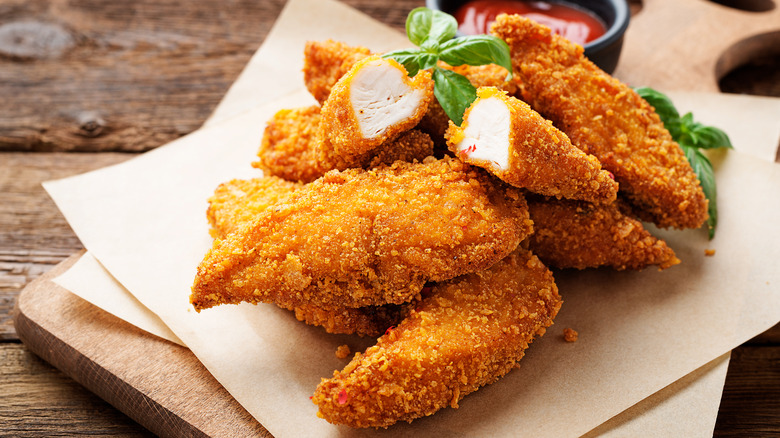The Subtle Difference Between Chicken Tenders And Fingers
In the vast realm of finger-licking comfort food, one dynasty of dishes stands far above the rest: fried chicken. Along with chicken nuggets and cutlets, some of the most popular chicken options are tenders and fingers. And, you'd be hard-pressed to find a restaurant that doesn't offer some version of these perennial favorites, regardless of the cuisine offered on the rest of the menu.
Now, you may think it safe to assume that chicken tenders and fingers are the same dish, but they most certainly are not. While the terms are often used interchangeably, a closer examination reveals subtle yet significant differences between these two beloved snacky meals. There are distinct differences in size, preparation, and cut of the meat used to make them.
Read on to discover the differences between what you may have thought was the same dish operating under two names. And, due to their unique properties, you may now be able to tell them apart at a glance.
Tenders require a specific cut of meat
Chicken tenders, typically considered the more sophisticated of the two varieties, are made from the tenderloin of the chicken. Located under each chicken breast, the entirety of the pectoralis minor, also known as the inner filet, is used to create a chicken tender. Fittingly, this cut is known for its tenderness and contributes to a more delicate eating experience. Chicken tenders are usually prepared by marinating the meat, coating it in seasoned breadcrumbs (or something a bit crispier), and then frying or baking until golden brown — though chicken tenders can also be enjoyed grilled or sauteed. The result is a juicy, indulgent piece of chicken with a nice crunch.
Compared to chicken fingers, chicken tenders are quite large since they are made of the whole inner filet. They are typically served two or three at a time along with sides, or adorning a Caesar salad or pasta. With their lighter and more refined profile, chicken tenders pair well with a variety of sauces, from classic honey mustard to tangy barbecue or zesty garlic aioli. Since tenders focus on quality cuts of meat, it's important not to smother their inherent flavor.
Chicken fingers are defined by their shape
On the flip side, chicken fingers (which are sometimes referred to as chicken strips) get their name from their shape rather than the cut of meat used to make them. Chicken fingers are typically made from breast meat and sliced into small, finger-shaped strips, hence the name. While chicken tenders can be cooked in several ways, chicken fingers are always coated in a batter before being fried, resulting in a thick and more substantial outer layer and are often associated with a more casual eating experience. They are also more likely to be found on a kid's menu, while tenders are put on the regular menu.
Compared to tenders, chicken fingers offer a chewier texture and a more substantial mouthfeel. The batter, often seasoned with a blend of spices, contributes additional flavors, giving chicken fingers a more complex profile. They are also smaller than tenders, so it takes several to make a full serving, and they are often served with thicker sauces than those with chicken tenders. Creamy ranch, buffalo sauce, or even a spicy Cajun sauce can offer a more intense chicken finger flavor experience. But, whether you prefer chicken tenders or chicken fingers, there is plenty to love about both of these classic meals.


